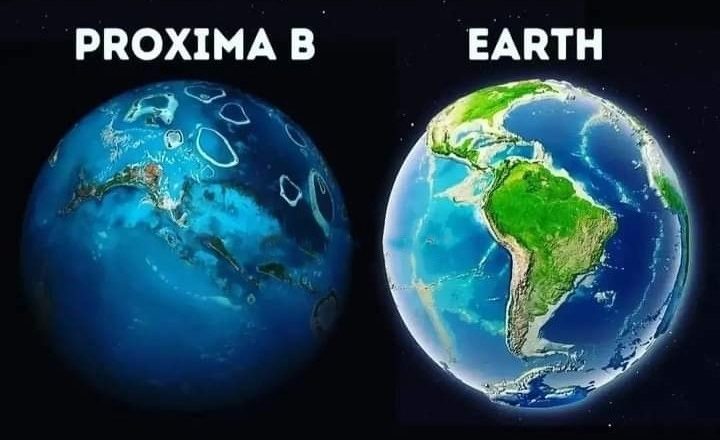When it comes to Proxima Centauri, although it is just an ordinary red dwarf star in the Milky Way, it has captured human attention for a unique reason – its proximity. Proxima Centauri is a mere 4.22 light-years away from Earth, on a cosmic scale, making it practically our cosmic neighbor.
However, Proxima Centauri is not a solitary entity drifting in the cosmos. In fact, it is a part of the “Alpha Centauri” trinary star system, alongside Alpha Centauri A and Alpha Centauri B. Interestingly, in this interstellar “three-body,” Alpha Centauri A and Alpha Centauri B form a relatively stable binary star system, while Proxima Centauri orbits this binary system at a distance of approximately 13,000 astronomical units. This arrangement implies that the orbital dynamics of these three stars are not as complex as one might imagine.
The uniqueness of this trinary star system and the proximity of Proxima Centauri have made it a focal point for scientists. Proxima Centauri, as a red dwarf star, despite its relatively dim luminosity, holds significant scientific potential. In this article, we will delve into the characteristics of Proxima Centauri and its potential role in space exploration and the search for extraterrestrial life. Let’s uncover the mysteries of this celestial body together and explore its secrets and potential future prospects.
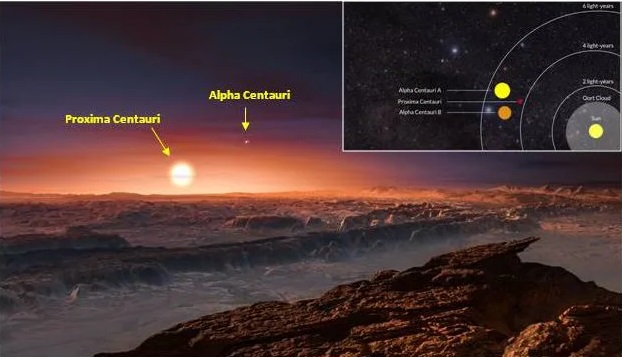
Proxima Centauri b: Earth’s Closest Exoplanetary Neighbor, More Earth-like Than We Imagined
As early as April 2016, scientists confirmed the existence of a planet near Proxima Centauri, which is currently the closest known exoplanet to Earth—Proxima b. According to the estimates at that time, this planet’s mass ranged from 1.27 to 3 times that of Earth, leading us to envision Proxima b as a significantly larger “big brother” planet. What’s exciting is that recent research suggests that Proxima b, situated in the “three-body world,” resembles Earth more closely than we previously thought.
This research stems from a study led by Francesco Pepe, an astronomer at the University of Geneva. In their work, the team employed the “ESPRESSO” spectrograph, which boasts three times the precision of previous instruments, allowing for an unprecedented level of accuracy in determining Proxima b’s characteristics. The findings revealed that this planet’s radius is approximately 1.07±0.35 times that of Earth, its mass is roughly 1.17 times that of Earth, and it orbits its host star at a distance of about 0.05 astronomical units with a period of approximately 11.2 Earth days. Scientists believe that Proxima b’s mass and size are remarkably similar to Earth’s, suggesting that it is very likely a rocky exoplanet resembling our home planet. This leads to a captivating question: given that Proxima b in the “three-body world” appears more Earth-like than previously imagined, could life possibly exist on this closest exoplanet to Earth?
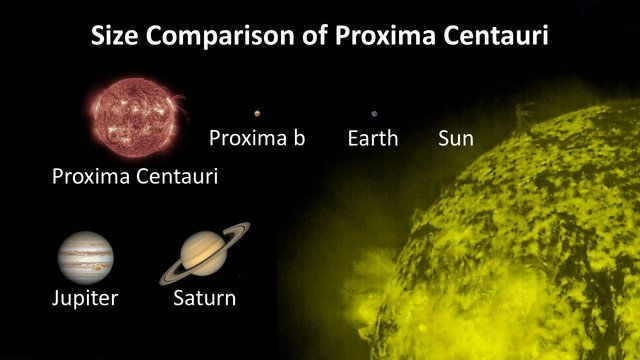
First and foremost, scientists speculate that Proxima b is located in the habitable zone. This is because even though Proxima b is only 0.05 astronomical units away from its host star, which is 1/20th of the Earth-Sun distance, its host star is a red dwarf with a mass of only 12.3% of the Sun’s mass and a luminosity of a mere 0.155%. Consequently, the surface temperature on Proxima b is not excessively high, theoretically allowing for the presence of liquid water.
The Journey to Life on Proxima b: Full of Challenges Yet Hopeful
However, for Proxima b to nurture life, it must meet a series of demanding conditions. For instance, the primary star of Proxima b is not as stable as the Sun; it intermittently experiences massive solar flares. Moreover, due to Proxima b’s proximity to the primary star, the planet is frequently subjected to intense ultraviolet and X-ray radiation. Therefore, Proxima b requires a dense atmosphere, with an ozone layer thicker than that of Earth, to shield against high-energy radiation from the primary star.
To maintain a thick atmosphere over an extended period, Proxima b must also possess a robust magnetic field. Without it, the planet’s atmosphere would eventually succumb to the dense onslaught of high-speed charged particles from the primary star. It is worth noting that, typically, when a planet is too close to its primary star, it experiences synchronous rotation. In this scenario, the planet becomes divided into a “day side” and a “night side,” with the “day side” always facing the primary star and the “night side” perpetually in darkness. If Proxima b follows this pattern, the “day side” would exhibit high temperatures, while the “night side” would be frigid. Therefore, the possibility of life would primarily exist in the transitional regions between the “day side” and “night side.”
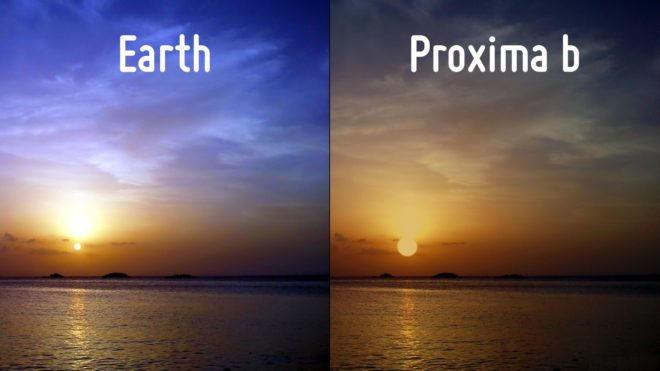
However, exceptions do exist, as demonstrated by Mercury in our solar system. It follows a “3:2 resonance” orbit around the Sun, meaning its rotational and orbital periods are not synchronous. Consequently, Mercury lacks a distinct “day side” and “night side.” Researchers suggest that if Proxima b also follows this orbital pattern, its chances of nurturing life would significantly increase.
Why Proxima b’s Suitability as an Exoplanet for Relocation Remains Uncertain?
As of now, everything related to Proxima b, the potentially habitable exoplanet, is based on theoretical extrapolation from human observations. Whether this planet is a paradise or a hostile environment remains highly uncertain. Official statements suggest that while Proxima b is assumed to be within the habitable zone, given its proximity to the red dwarf star, it may experience much stronger radiation, including ultraviolet and X-rays, compared to what Earth receives from the Sun.
Researchers from the Pale Red Dot project have examined the potential climate conditions on this planet, but whether it has water remains unknown. The theoretical possibility of liquid water on the surface, if it exists, is primarily limited to regions receiving ample sunlight, such as tropical areas (in the case of a 3:2 resonance orbit) or the day side (in the case of synchronous rotation). Additionally, factors such as the planet’s rotation state (tilt and period), the radiation from the red dwarf star, and the planet’s history of formation could all influence its climate. Noted American astronomer Phil Plait highlights two critical uncertainties. First, the planet’s true mass remains unknown, as it depends on the angle of observation. If observed from the side of the planet’s orbital plane, the estimated mass could be 1.3 times that of Earth. However, if the observation is inclined, the planet’s mass might be larger, significantly affecting its environment.
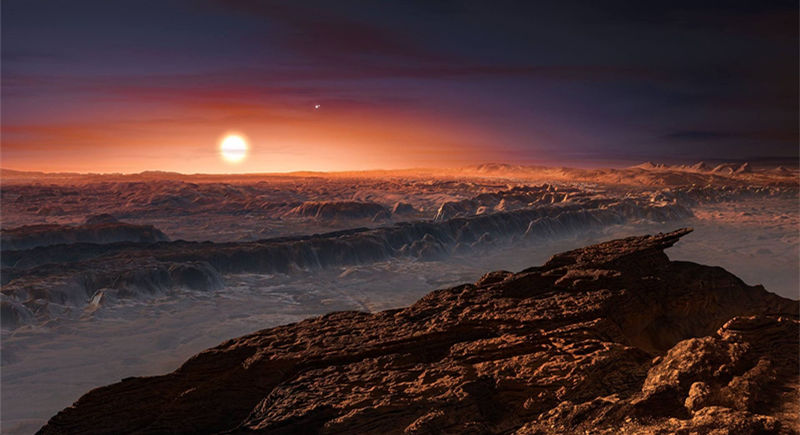
Secondly, the presence of a planet in the habitable zone doesn’t guarantee the existence of liquid water. Without a dense atmosphere, temperatures on the planet could be as low as -40°C, which is even lower than Earth’s -15°C without the greenhouse effect. The absence of liquid water and suitable light and heat would reduce the possibility of supporting life. Furthermore, information about the planet’s composition, size, and other crucial aspects remains unknown. Thus, Plait emphasizes that Proxima b could be entirely unsuitable for human habitation, and there’s no way to ascertain whether it resembles an Eden or a desolate wasteland.
In conclusion, while scientists refer to Proxima b as a potentially habitable planet based on its location in the habitable zone and its Earth-like mass, many uncertainties, including atmospheric conditions and radiation levels, remain unaccounted for. The concept of habitable zones is just one aspect of a complex interplay of factors, and the likelihood of Proxima b achieving this delicate balance is highly uncertain.
Prospects for Future Research and Exploration of Proxima Centauri b
Although we have gained initial insights into Proxima Centauri b, it remains a planet shrouded in mysteries, with numerous uncertainties yet to be unraveled. Future research will play a crucial role in unlocking these mysteries and unveiling more about this enigmatic world.
We now understand that Proxima Centauri b might be situated in the habitable zone, with its mass and size being Earth-like, making it a hopeful candidate in the quest for extraterrestrial life. However, there are still many factors to consider, such as the planet’s atmospheric composition, rotation state, the radiation from the red dwarf star, and its planetary history.
Future space exploration missions and astronomical observations will provide us with more information about Proxima Centauri b, including its atmospheric constituents and potential signs of life. Potential missions may involve the detection and analysis of the planet’s atmosphere and the search for possible biomarkers.
Furthermore, ongoing technological advancements will offer us more opportunities for observations and research on this planet. With the development of future space telescopes and detectors, we can anticipate more comprehensive data and precise measurements to delve deeper into the nature of Proxima Centauri b.
Ultimately, the future research on Proxima Centauri b will continue to fuel the curiosity of scientists, propelling us to explore the cosmos further, search for signs of extraterrestrial life, and unravel the final mysteries of this habitable exoplanet. Regardless of the outcome, Proxima Centauri b has already become a bright star in space exploration, and its story will continue to inspire an infinite fascination with the universe.
More UFOs and mysterious files, please check out our YouTube channel: MysFiles
Chelyabinsk meteor event: Did the UFO crush this huge meteor?
